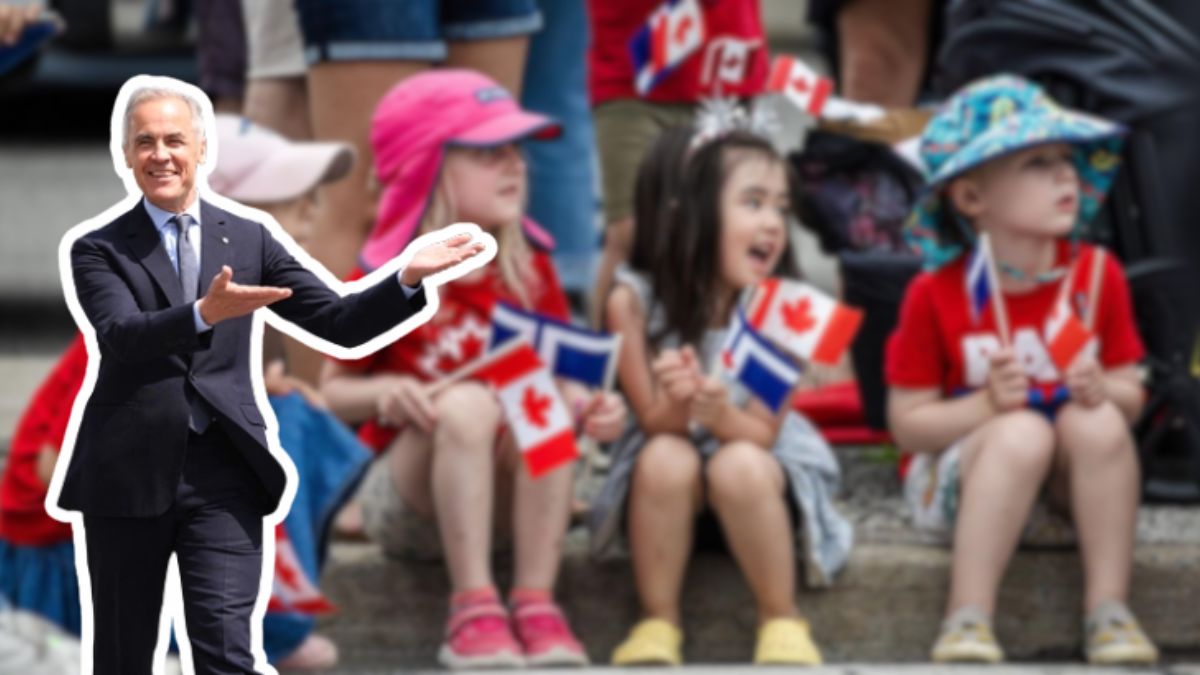Canadian families could soon see a major financial lift as Parliament debates a proposed \$1,200 top-up to the Canada Child Benefit (CCB) in 2025. The measure, tabled as part of a broader affordability package, comes at a time when households across the country are struggling with high food prices, soaring rents, and mounting childcare costs.
If passed, the plan would represent one of the most substantial expansions of the CCB since its launch in 2016, potentially changing the monthly financial outlook for millions of parents. Managed by the Canada Revenue Agency (CRA), the benefit would be added directly to existing CCB payments, meaning families wouldn’t need to apply separately.
Why the \$1,200 Top-Up Matters
The proposed boost is not simply a financial handout—it’s designed as a strategic response to the cost-of-living crisis that continues to pressure households in 2025. Inflation, currently hovering around 3.4%, has hit families particularly hard, with grocery bills up more than 20% compared to three years ago.
The extra \$1,200 per child would allow families to:
- Offset rising food costs and rent.
- Pay for school supplies, clothing, and extracurricular activities.
- Reduce childcare expenses, which remain one of the largest household burdens.
For low-income households, the top-up could be the difference between stability and financial strain. For middle-income families, it represents a buffer against unexpected costs. And for policymakers, it demonstrates a commitment to child welfare and affordability, both of which remain top election-year issues.
Eligibility: Who Qualifies for the Proposed Top-Up
The proposed CCB enhancement would follow the same rules as the base benefit. To qualify, families must:
- Have at least one child under the age of 18.
- Be Canadian residents for tax purposes.
- File annual tax returns, regardless of income level.
- Meet the income thresholds set by the CRA.
The structure would remain income-tested, meaning that:
- Low-income families would receive the full \$1,200 top-up per child.
- Middle-income households would receive a reduced amount based on their earnings.
- High-income families may not qualify at all.
This tiered approach ensures that the money goes to those most in need, while still providing targeted support to working-class households facing affordability challenges.
Comparing Current CCB vs. Proposed Top-Up
Here’s how the numbers break down under the new plan:
| Component | Current (2024–2025) | Proposed (2025) |
|---|---|---|
| CCB (children under 6) | Up to \$7,437 per child | No change |
| CCB (children 6–17) | Up to \$6,275 per child | No change |
| New Top-Up Amount | N/A | Up to \$1,200 per child |
| Payment Schedule | Monthly | Monthly (quarterly under review) |
Families won’t need to take extra steps. If you’re already receiving the CCB, the CRA will automatically adjust payments once the legislation passes.
Why Now? The Government’s Reasoning
The timing of the proposed top-up is significant. With over 1.2 million Canadian children living in food-insecure households, according to Statistics Canada, the government is under pressure to respond.
Key reasons driving the proposal include:
- Inflationary pressures: Families report cutting back on essentials to cover rising bills.
- Child poverty reduction goals: Canada has pledged to reduce child poverty rates as part of long-term social policy commitments.
- Election-year politics: With affordability ranking as one of the top voter concerns, additional child benefits could prove both socially and politically strategic.
Beyond immediate relief, officials argue that investments in families pay dividends over the long term by improving childhood health, education outcomes, and workforce readiness.
Timeline: When Could Families See the Boost?
If Parliament approves the proposal, here’s the expected timeline:
- Late August 2025: Parliamentary vote scheduled.
- September 2025: CRA completes technical system updates.
- October 2025: First payments of the top-up expected.
The CRA has already started preparing for adjustments, meaning that if the vote passes on schedule, parents could see the top-up reflected in their fall benefit statements.
Automatic Payments Through the CRA
One of the most important aspects of the proposal is its automatic rollout. Families won’t need to fill out separate applications.
Instead, eligibility will be determined by:
- Your most recent tax return.
- The number of dependent children under 18.
- Household income levels.
If your 2024 tax return is not filed, however, your payments could be delayed—or denied entirely. For this reason, the government is urging all parents to file on time to avoid missing out.
How the Top-Up Could Change Family Budgets
For a family with two children, the proposed \$1,200 per child could amount to an extra \$2,400 annually. That could translate into:
- Two months of daycare costs in many provinces.
- Four months’ worth of groceries for an average family of four.
- Coverage for school supplies, clothing, or extracurricular activities for the year.
While critics argue that \$100 a month per child is modest compared to rising costs, advocates stress that every dollar counts—particularly for households already stretched thin.
Political Reactions and Public Debate
Unsurprisingly, the proposal has sparked debate in Ottawa and beyond.
- Supporters argue it provides immediate relief to families and demonstrates government responsiveness to affordability concerns.
- Critics worry about the fiscal cost. The expansion could add billions in new spending, raising questions about federal debt and deficit targets.
- Policy experts note that while cash transfers help in the short term, longer-term solutions like affordable housing and childcare system reforms are equally critical.
Public opinion appears mixed but leaning supportive. A recent Angus Reid survey suggested that more than two-thirds of Canadians support direct benefit increases to families, even if it means higher government spending.
Connection With Other Family Supports
The proposed top-up would not exist in isolation. Families could still qualify for other forms of support, including:
- GST/HST Credit: A tax-free quarterly payment for low- and modest-income Canadians.
- Provincial child benefits: Several provinces, including Ontario and BC, have their own family benefit programs.
- Housing and rental assistance: Available in some regions for low-income families.
When combined, these programs can significantly reduce financial strain, though many advocates argue gaps still exist.
Reminders for Parents
To maximize eligibility for the CCB top-up, families should:
- File 2024 taxes promptly – Your eligibility depends on up-to-date income information.
- Check CRA MyAccount – Ensure your household information, including dependents, is current.
- Monitor benefit statements – CRA notices will indicate top-up amounts once confirmed.
- Stay updated – Follow government announcements in late summer for official confirmation.
Conclusion: Hopeful Families, Pending Approval
The proposed \$1,200 Canada Child Benefit top-up represents both hope and uncertainty. On the one hand, it could provide meaningful relief to families struggling with the rising cost of living. On the other, it still requires parliamentary approval, leaving parents waiting anxiously for confirmation.
If passed, the top-up will mark one of the largest expansions of child support in nearly a decade, underscoring the government’s recognition of affordability as a national priority. Until then, the message for families is clear: file taxes, stay informed, and prepare for possible changes this fall.
5 Relevant FAQs
Q1: When will the \$1,200 Canada Child Benefit top-up start?
If approved by Parliament, payments are expected to begin in October 2025.
Q2: Do parents need to apply separately for the top-up?
No. If you qualify for the existing CCB, you’ll automatically be considered for the top-up.
Q3: How much will families receive from the CCB top-up?
Eligible households could receive up to \$1,200 per child annually.
Q4: What are the eligibility requirements?
Families must have children under 18, file annual taxes, and meet CRA income thresholds.
Q5: Why is the government proposing this top-up now?
To address the rising cost of living, reduce child poverty, and provide political and financial support ahead of upcoming elections.











